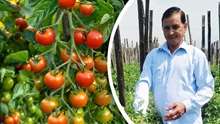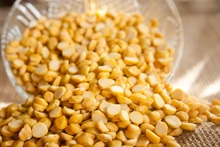
Sunburn injury is a prevalent concern in certain regions of India, particularly in states like Southern India, Rajasthan, Gujarat, Maharashtra, and Kolkata. This phenomenon typically occurs when the summer temperatures soar beyond 38°C. Its symptoms are quite visible in the months of March and April, characterized by a wide difference between day and night temperatures, particularly when the mercury crosses the 38°C mark.
The high radiation levels contribute to giving the plants a bleached appearance, primarily caused by the destruction of chlorophyll in stems. This causes the plants to grow less, and if the problem is not resolved, it may eventually cause the plants to die. Notably, the intensity of sunburn on the western side of the plant stem can vary between 10% to 50%, and in severe cases, it may even result in the complete loss of the orchard, aggravated by the onset of stem rot diseases. Therefore, proactive measures are necessary to protect dragon fruit crops from sunburn injury.
Proactive Measures for Sunburn Injury Management
1.Timely Detection and Precautions
The first step in mitigating sunburn injury in dragon fruit is timely detection. Farmers need to be vigilant, particularly during the months of March and April, when the risk of sunburn is high due to extreme temperatures and intense radiation levels. Regular monitoring of the plants for any signs of bleaching or reduced growth is essential for early intervention.
2.Application of Anti-Transpirants
One effective method to combat sunburn injury is the application of anti-transpirants. As per ICAR-IIHR recommendation, a mixture of Kaolinite (50 g per litre of water) and Neem soap (4 g per litre of water), combined with seaweed extract and humic acid (4 ml per litre of water), can be sprayed on the dragon fruit plants during the critical months of January, March, and April. This treatment not only helps reduce sunburn damage but also provides protection against fungal and bacterial infections, thereby promoting overall plant health.
3.Adequate Irrigation
Maintaining proper irrigation practices is crucial for increasing the crop's tolerance to sunburn injury. Each dragon fruit pole should receive 8-10 liters of water, ensuring that the plants remain adequately hydrated, especially during periods of high temperature stress. Adequate irrigation not only helps in cooling the plant tissues but also enhances their resilience to environmental stressors, including sunburn.
In regions where sunburn injury poses a significant threat to dragon fruit crops, proactive management strategies are essential for ensuring optimal plant health and productivity. By implementing timely detection methods, coupled with the application of anti-transpirants and adequate irrigation practices, farmers can effectively mitigate the adverse effects of sunburn and safeguard their crops against potential damage.
Proactive actions are ultimately essential to maintaining the health and vitality of dragon fruit orchards in sun-exposed areas, ensuring a plentiful crop and financial stability for farmers.










